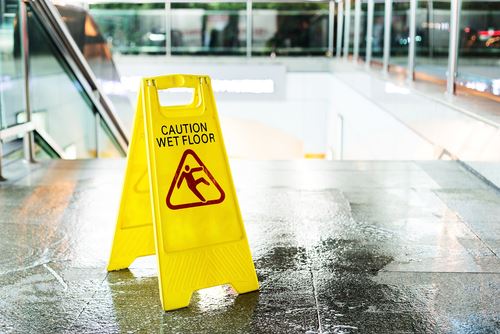 When it comes to premises liability, California law makes it clear land owners have a legal duty to ensure the safety of their properties. This means taking reasonable measures to keep guests free from dangers posed by hazardous conditions, which can include hazards such as:
When it comes to premises liability, California law makes it clear land owners have a legal duty to ensure the safety of their properties. This means taking reasonable measures to keep guests free from dangers posed by hazardous conditions, which can include hazards such as:
- Open holes
- Wet or slippery floors
- Insufficient lighting
- Inadequate security or supervision
- Crumbling stairs or steps
- Cords, uneven surfaces, and other tripping hazards
When premises owners fail to address and remedy potential hazards they knew about, or should have known about, victims injured as a result of those preventable hazards have a right to pursue compensation from the property owner for their damages, including their medical costs, lost wages, and pain and suffering.
However, in most states, there are limitations when it comes to a property owner’s duty of care. These include:
- Trespassers – While victims injured on another’s property have the right to hold that property owner accountable for negligence, they must prove that they were lawfully permitted to be on that property. Under this standard, visitors and guests (invitees) harmed on a public premises (such as a retail or grocery store) would have the right to pursue a premises liability claim, as would licensed workers contracted by the property owner (such as a plumber or electrician). Trespassers, under most state laws but NOT in California, would not have a cause for action.
- Reasonable measures – A property owner’s duty of care requires them to take “reasonable” measures in fixing hazardous conditions, or providing adequate warnings to guests. Depending on the nature of a hazardous condition, whether or not it was obvious and under the reasonable scope of a property owner’s oversight, and the costs to repair it, among other factors, property owners may only need to provide warning signs.
Attractive Nuisances in California
Although both of these issues are valid defenses to premises liability claims brought by victims in many states, they do not apply under the legal doctrine of “attractive nuisances.” This legal standard refers to any features or conditions on a property that are likely to attract the attention of children, who, due to their curiosity, can be lured onto the property and suffer harm. Common attractive nuisances include things like pools (which is why premises owners often need to have sufficient gates or barriers), ponds, open pits, abandoned equipment, and caves.
Although trespassers in most states have less protection under the law when it comes to premises liability when compared to lawfully permitted visitors and guests, children are considered a sub-group of trespassers to whom premises owners owe a different legal duty of care – especially when there are attractive nuisances that would lure them onto the property. This provides injured children and their parents with recourse to hold negligent property owners accountable for preventable injuries.
Proving Premises Owner Negligence for Child Injuries
While many states adhere to the doctrine of attractive nuisances, California does not (at least since 1970). Because the status of a victim on one’s property is not a requirement for liability in California, property owners can still be held liable for harm suffered on their property by trespassers, including trespassing children, if their actions amounted to negligence (some exceptions to liability for trespassers may still be made).
Today, California no longer requires a victim to be of specific legal status when they are injured on another’s property to invoke property owner liability. Instead the focus has shifted onto determining whether or not a premises owner used reasonable care in keeping its property safe, especially in relation to the foreseeability of a risk (such as the foreseeability of a child entering its property).
In cases involving child injuries, this can include a focus on factors such as:
- Whether premises owner knew or should have known children were likely to trespass onto its property;
- Whether the premises owner knew or should have known about a hazardous condition and the risks it posed to individuals, including children, on its property;
- Whether a child should have understood the risks posed by the hazardous condition; and
- Whether the premises owner had the ability to fix the hazardous condition
In the absence of an attractive nuisances doctrine, victims and their families need to work with experienced attorneys like those at Biren Law Group to focus on the essential elements of a premises claim, including the nature of a dangerous condition and whether or not premises owners should have known about potential risks involving children. Our legal team can help you better understand the elements involved in your potential case, whether you may have a valid claim, and how we can assist in investigating your premises accident during a free consultation. Contact us to learn more.

